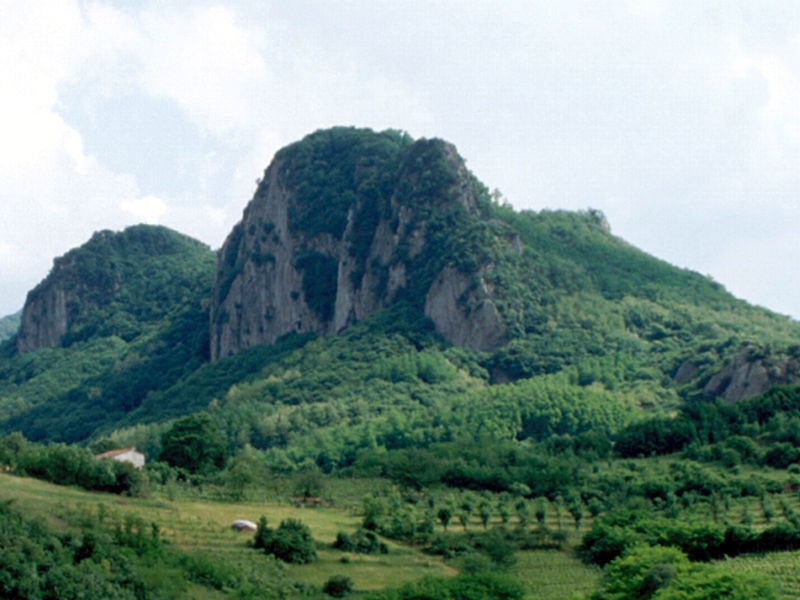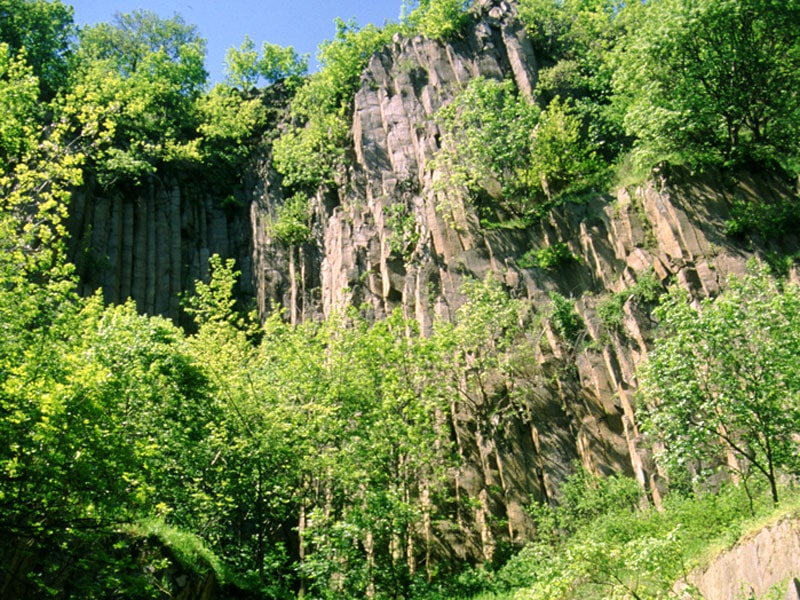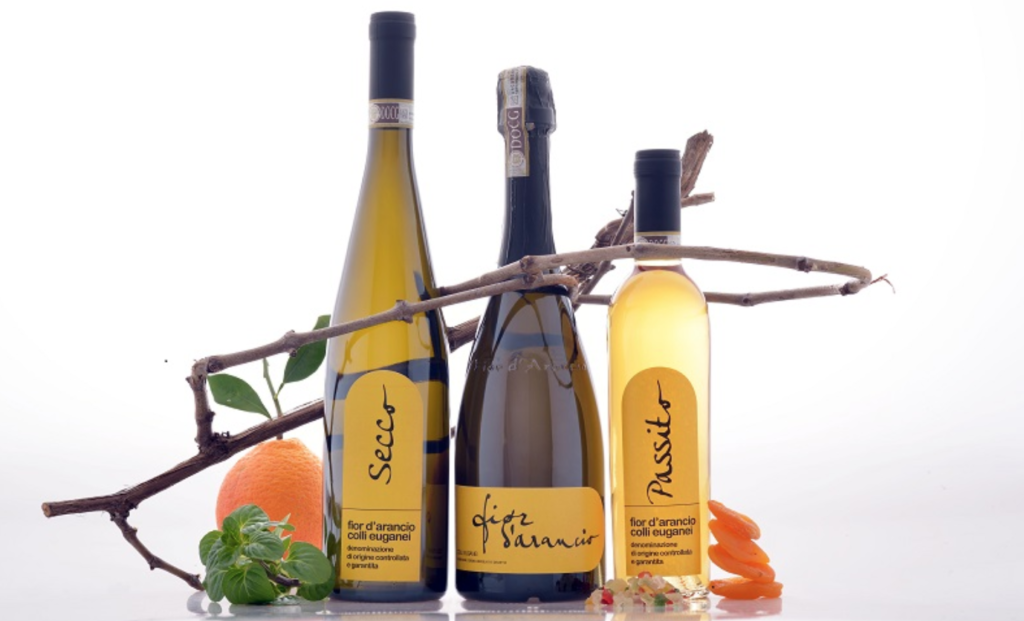Get to grips with the terroir essentials of Veneto’s Colli Euganei wine region – including the main soil profiles, climate, grape varieties and wines of Colli Euganei.
Where is Colli Euganei anyway?
In the northeast of Italy, Colli Euganei is 60km from Venice. In the Padovan-Venetian plains, the geography surrounding Colli Euganei is flat however the region itself is characterised by large volcanic hills.
Latitude: 45.3° N
Longitude: 11.7° E
Guide to Colli Euganei: The Essentials of Terroir

The climate in Colli Euganei
Colli Euganei has a Mediterranean climate with warm and dry summers and mild, wet winters. The southern region of Colli Euganei is warmer and drier than the north. The southern-facing slopes, which face the sun during the day, are warmer with longer sunlight hours compared to the north-facing slopes.
The sirocco wind, a hot wind which comes across the Mediterranean from the Sahara desert, often reaches Colli Euganei in the summer months. It increases the average temperature and can dehydrate the grapes.
In this video Andrea and Roberta of Quota 101 discuss the climate of Colli Euganei:
Annual rainfall in Colli Euganei
850 mm per year, usually in the winter months
Average temperatures in Colli Euganei
- Average temperature during the year 13.6 °C
- Average temperature in the summer: 24°C
- August night time temperature minimum 17 °C
- August daytime maximum 30 °C
Average temperature in the winter: 4°C- January night time temperature minimum 1 °C
- January daytime maximum 6 °C
The landscape of Colli Euganei
It is the landscape which makes Colli Euganei stand apart from neighbouring wine regions in Veneto. Large volcanic hills are described as islands in the sea, reflecting how they are the sole protrusion on the otherwise pancake-flat landscape.
The hillsides offer better drainage, poorer soils and different sun exposures to the flatlands in between and the more prized vineyards are found on the slopes or towards the hills. Inclines range up to approximately 35%
Colli Euganei soils

This is what really sets Colli Euganei apart from its neighbouring wine regions in Veneto. The Colli Euganei is one of the few volcanic wine regions of Italy, however, the soils aren’t entirely volcanic – there is also a mix of limestone and clay soils. The important geological formations of the Euganean hills can be simplistically broken down into two major periods:
The ancient seabed & underwater lava flows
The whole region was underwater and an ancient seabed. This is where the marine deposits built up (which later formed limestone). Approximately 43 million years ago, underwater basaltic lava flows began the first volcanic phase of the Euganenean hills. As the lava emerged it solidified and forms some of the basaltic soils found in the central parts of the Euganean hills. Limestone and clay is also a key component in the soils from this earlier geological period.
Volcanic cones form the Euganean hills (still underwater)
Several million years later, after a period of dormancy, volcanic activity reshaped the geology of the region once again. Approximately 35 million years ago, there was another volcanic phase which saw flows of acid lava. Following the cooling process, steep cones of volcanic rocks remained with rhyolite, trachyte and latite rocks. The thrust of the magma also pushed up layers of limestone (seabed) soils.
A unique landscape revealed

After all the volcanic activity underwater, the sea retreated and the unusual landscape was revealed with complex and diverse volcanic and sedimentary soils.
The bare volcanic peaks, the trachyte faces of the rocks, are notable in visiting the Euganean hills – especially with those which have been carved off by quarries for building purposes (until the region became protected in the 70s). The volcanic stone was particularly valued for building locally and also in Venice. If you visit Venice’s famous San Marco Piazza you’ll be walking over volcanic stones brought from Colli Euganei.
Winemaker Franco Zanovello describes the geological formation of the region in this video:
What do the Colli Euganei soils mean for wine?
I’ll let winemaker Filippo Gamba, and export manager Mauro Businaro, from Alla Costiera (which makes wines on both volcanic trachyte and limestone), take this one:
Colli Euganei sub-regions
There are 15 different sub-regions of the Euganean hills and each has a slightly different climate to the other, however, within each sub-region the microclimate and soils can also vary.
In general, the southern sub-regions of Colli Euganei are slightly warmer and drier than the northern sub-regions.
What matters most in terms of vineyard location is not the sub-region but the position of the slope – north-facing slopes are cooler with less sun exposure and are usually planted with white grape varieties, while the warmer and sunnier south-facing slopes are planted with red grape varieties.
In this video interview winemaker Paolo Brunello discusses making wine on the southern wine regions of Colli Euganei:
Vineyard management in the Euganean hills
As an old wine region, there are many different vineyard management systems in place. The older vineyards are generally trained very tall VSP training systems, whereas modern plantings are on lower systems.
Old vineyards are commonly planted as field blends, whereas modern vineyards are planted by variety.
Approximately a fifth of the wine producers in Colli Euganei manage their vineyards organically.
Other regional notes
Colli Euganei is overrun with wild boar, which can destroy vineyards and a year’s crop. The main management technique for the wild boar is hunting them and making local salami!
Grape Varieties in Colli Euganei
Main red grape varieties in Colli Euganei

The most important red grape varieties in the Euganean hills are the red Bordeaux varieties. Some say these varieties were first planted by the Count of Sambuy in 1820, others credit the Corinaldi family with first planting them in 1870.
Merlot
- 500 hectares
- Most planted variety in Colli Euganei
- Used predominantly for single-variety or blends of still red wine
Cabernet Sauvignon
- 275 hectares
- Used predominantly for single-variety or blends (usually with Merlot or Cabernet Franc/Carmenère) for still red wine
Cabernet Franc & Carmenère
- 230 hectares
- Historically Carmenère was planted and mistakenly identified as Cabernet Franc. Many old plantings contain a mixture of both varieties and they are both considered a ‘Cabernet blend’. Some producers are now vinifying them separately as single-varieties however the majority use these vines in blends
Raboso
- Ancient Venetian variety with two sub-varieties: Raboso Piave (aka. Friularo) and Raboso Veronese
- Used to add acidity to red blends or occasionally for sparkling wine (rose or red)
Main white grape varieties in Colli Euganei
Glera/Serprino
- 430 hectares
- Glera (the prosecco grape) is the most planted white grape variety in Colli Euganei and Serprino is a local biotype (which can be called glera, prosecco or serprino)
- Used for sparkling wines made under Charmat method and occasionally for still white wines
Fior d’Arancio (yellow muscat/moscato giallo)
- 270 hectares
- Fior d’Arancio is the local name for yellow muscat/moscato giallo
- It is the only variety permitted to produce Colli Euganei’s only DOCG, which can be a still, sweet or sparkling white wine
Moscato Bianco
- 170 hectares
- Usually used for dry white wines
Other grape varieties in Colli Euganei
- 1125 hectares
- Including white varieties Garganega, Manzoni Bianco, Tai (formally known as Tocai Friulano), Pinot Bianco, Chardonnay
- Including red varieties Corbinella, Marzemina, Pattaresca, Turchetta
Colli Euganei DOC rules
Colli Euganei DOC was established in 1969 and includes still, sparkling and sweet wines. The main categories under the DOC rules are:
- Colli Euganei Rosso DOC: Blend of Cabernet Franc, Cabernet Sauvignon, Carmenère, and/or Merlot (max. 85% of any one variety); maximum 10% Raboso
- Colli Euganei Cabernet DOC: Minimum 85% Cabernet Franc, Cabernet Sauvignon, and/or Carmenère
- Colli Euganei (single variety) DOC: Single variety wines must have a minimum 85% of said variety and can be Merlot, Cabernet Sauvignon, Cabernet Franc, Carmenère, Chardonnay, Garganega, Manzoni Bianco, Pinello, Pinot Bianco, Sauvignon (Sauvignon Blanc), Serprino, Tai or Moscato (which has to be 90% minimum of Moscato Bianco)
- Colli Euganei Bianco DOC: Minimum 30% Garganega; minimum 30% Glera/Serprino and/or Sauvignon Blanc; minimum 5–10% Moscato Bianco and/or Moscato Giallo. A maximum of 30% of other permitted regional varieties.
Colli Euganei DOCG rules: Fior d’Arancio DOCG

The Fior d’Arancio DOCG was established in 2010.
- Minimum of 95% of moscato giallo (yellow muscat)
- Can be sparkling, still or passito (sweet)
Colli Euganie wine production & wine producers
- Total bottles DOC: 3.5 million bottles per year
- Approximately 900 growers in Colli Euganei (over 600 of which supply to the local co-op, Cantina Colli Euganei)
- Average vineyard size: under a hectare
Photos @ParcoColliEuganei
Read Volcanic islands in the sea – a guide to Colli Euganei wines

